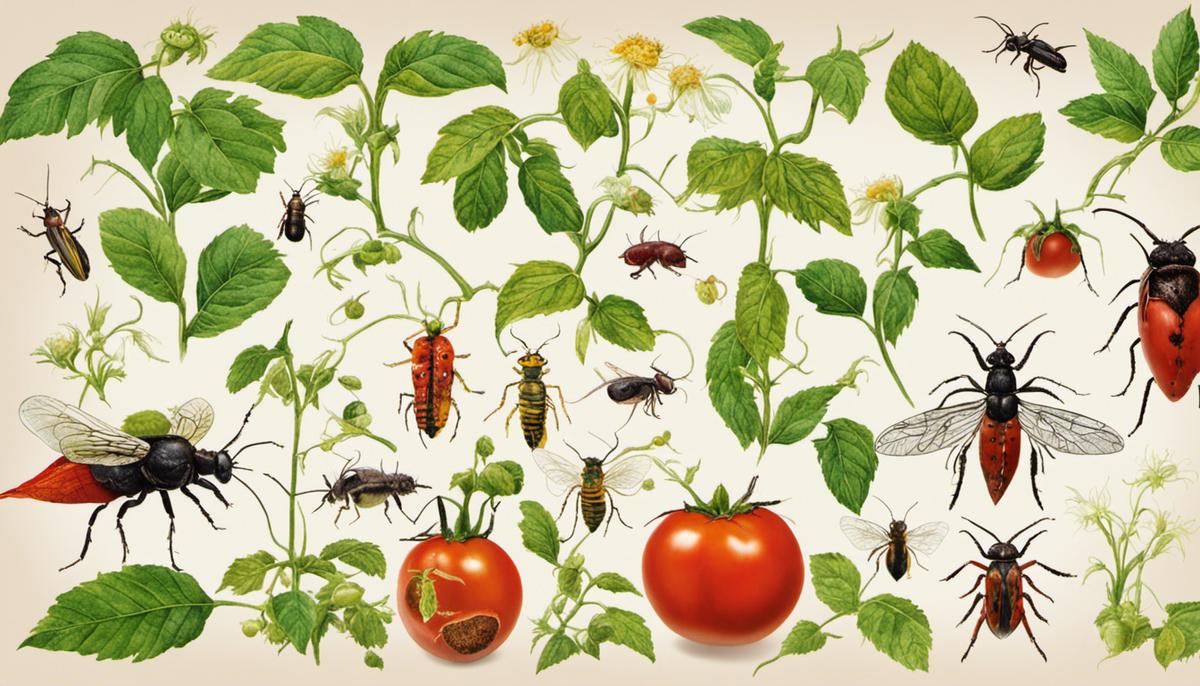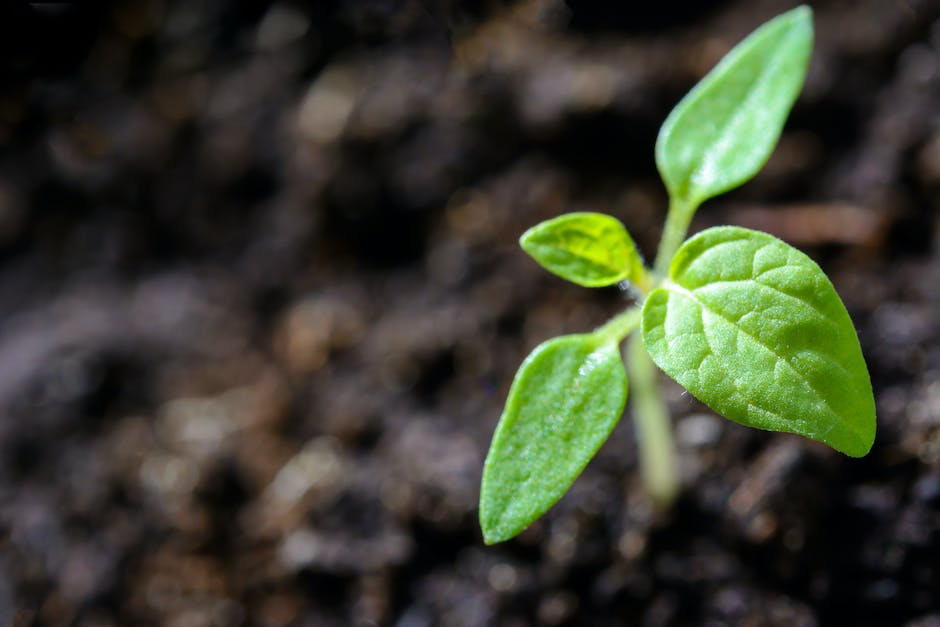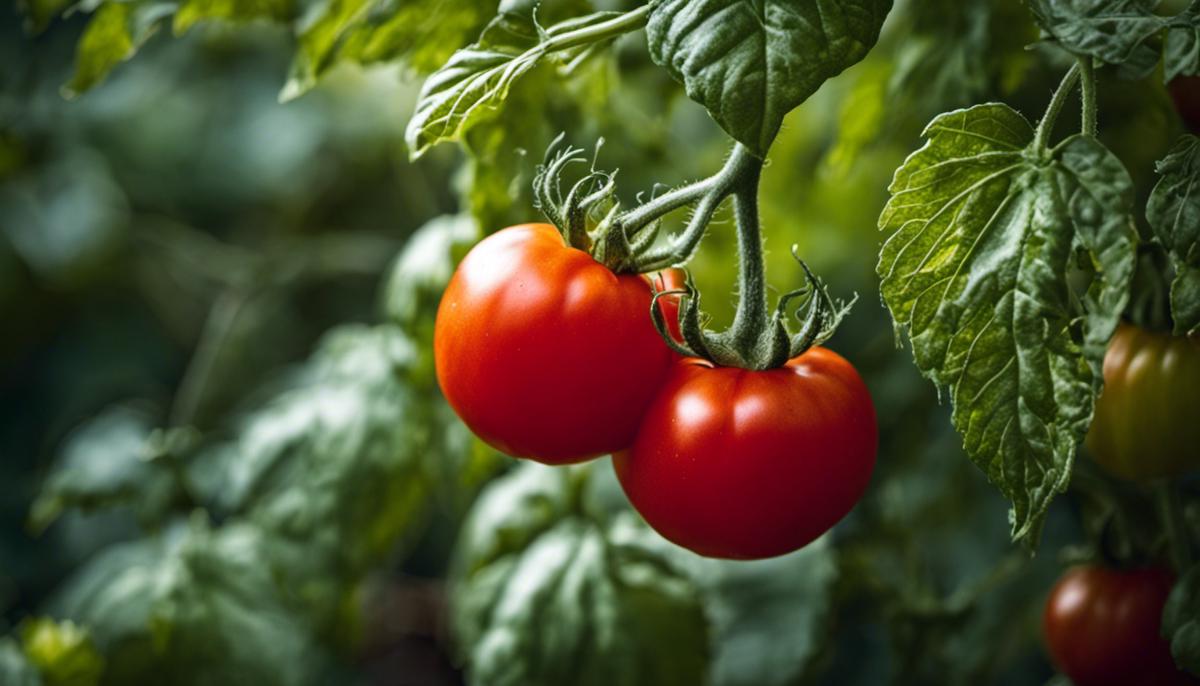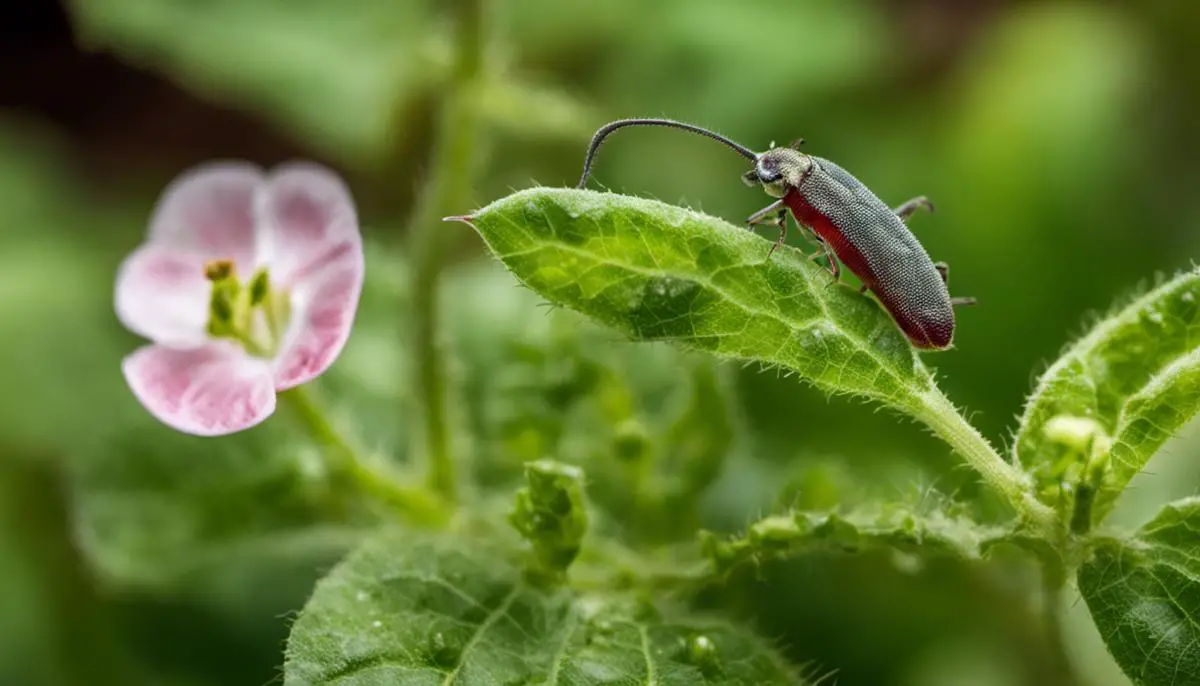Growing tomatoes can be a rewarding hobby, yielding delicious, homegrown products if done right. However, any seasoned tomato gardener knows that there are ample factors to consider in achieving the seemingly elusive goal of a perfect tomato crop. Healthy tomato plants laden with ripe, juicy fruits are often the result of a keen understanding of not just what the plant needs but also of the myriad challenges that can hinder its progress. This includes common pests and diseases that make indomitable adversaries, the specific conditions where the plant thrives, and the necessary steps in planting and maintaining your tomato garden.
Understanding Tomato Pests and Diseases
Take a stroll through a garden feasting on the sight of lush, ripened tomatoes. The color! The fragrance! Truly, tomato-growing can be a hobby that feeds the soul – as well as the stomach – when done right. But like all things beautiful, growing tomatoes can have its challenges, like pests and diseases. It’s time we dug a little deeper and explored what’s bugging our favorite fruit (yes, tomatoes are technically a fruit!).
Reader Poll: What online courses would interest you?
First, let’s talk about Tomato Hornworms. These wriggly green creatures look like they might do some real munching damage in your vegetable garden, and they aren’t bluffing! Hornworms can rapidly defoliate, and even consume entire tomato plants if unchecked. The best way to handle this pest is through biological control. Play matchmaker and invite Braconid wasps to the garden party – the wasp larvae that hatch on Hornworms are deadly to them (It’s a minuscule thriller, isn’t it?).
Next on the list are nasty Aphids. Usually finding their way into your garden in spring and early summer, aphids suck the juice from plants, inhibiting their ability to photosynthesize. Ladybugs or lacewing larvae are the perfectly natural pest control for dealing with Aphids. Alternatively, DIY lovers might get back into their hobby-groove by creating an effective insecticidal soap mix.
We can’t forget about the Furrowing Beetles. These bugs are particularly tough on young seedlings. They don’t have a superhero critter that hunts them down. The trick is to create a physical barrier around the plant or use diatomaceous earth to control this pest.
Subscribe to our newsletter!
Stippling Whiteflies are next on the offender list. They drain life from the undersides of leaves and cause wilting, yellowing, and leaf fall. Parasitic wasps or insecticidal soaps can keep this white plague under control.
Now, from pests let’s transition to diseases. Late Blight and Verticillium wilt can be garden party crashers. Late Blight typically shows itself via large, dark spots on leaves, stems, and fruits. This fungus is relentless, spreading rapidly and leaving entire plants devastated.
Verticillium wilt, on the other hand, is a little sneakier. It affects the plant’s vascular system, causing stunted growth, wilting, and discoloration. Both are soil-borne diseases and preventable through crop rotation, sanitation and only planting disease-resistant varieties.
Another common disease is Fusarium wilt. Similar to Verticillium wilt, it affects the vascular tissue of the plant but is identifiable through one-sided yellowing or wilting.
Bacterial spot is also a recurring nuisance that causes raised, brown spots across leaves and fruits. Copper-based sprays will arm your tomatoes against this bacterial bad guy.
In tomato growing, knowing is half the battle. Understanding what can threaten your tomatoes – and more importantly, how to combat it, is all part of becoming a responsible and successful tomato grower. There’s a time-tested wisdom in working with nature, building a peaceful co-existence between our plants and the critters that inhabit our gardens, using natural solutions in the spirit of organic cultivation. This harmony, after all, is one of the many things that makes our hobby so incredibly enjoyable. And nothing beats the taste of a tomato grown with the learnings of experience, watered with passion and dedication, and ripened by the sun itself. Now that’s a slice of the hobbyist gardener’s life!

Growing Conditions and Nutrition
Nurturing Tomato Plants: Discovering the Ideal Growing Conditions and Nutrition
After securing your tomato plants from pesky pests and diseases, it’s time to switch our focus to creating a favorable environment that facilitates thriving, hearty, and flavorsome tomatoes. Indeed, successful tomato cultivation hinges greatly on forged balance between the right growing conditions and proper nutrition.
Firstly, it’s imperative to discern that tomatoes favor a warm climate, with optimal growing temperatures ranging between 55°F and 75°F. Temperatures exceeding 85°F may stall fruit set, while temperatures dipping below 50°F can potentially harm the plants.
Seeing that they’re sun-worshipping plants, tomatoes require a generous amount of sunlight; about 6 to 8 hours a day, ideally. This ample sunlight accelerates the process of photosynthesis, paving the way for vigorous growth and delectable, sun-ripened fruit.
Another key conversation about tomato cultivation revolves around soil. The perfect soil for tomatoes leans towards the acidic side, within a pH range between 6.0 and 6.8. Well-drained, rich-in-organic matter soil is crucial to prevent waterlogging and facilitate the permeation of nutrients.
Now that we’ve established the cardinal conditions, let’s delve into the nutritional needs of these plants. Tomato plants are heavy feeders and require a broad range of nutrients throughout their growth cycle.
Before planting, it’s essential to amend the soil with compost or well-rotted manure as they contribute significantly to soil fertility. This organic matter not only enhances the soil’s texture but also provides a prolonged source of nutrients.
Nitrogen is crucial during the initial stages of the plant’s growth, promoting lush and healthy foliage. However, once the plant starts to flower, lessen the nitrogen supply and switch to a phosphorus-rich fertilizer. Phosphorus aids in strong root development and fruit formation.
Also, tomatoes have an intense requirement for potassium, which plays a pivotal role in photosynthesis, water absorption, and disease resistance. Broadcast a granular tomato fertilizer that harnesses balanced ratios of these nutrients around the plants and lightly rake it into the surface. Remember to water thoroughly after applying to facilitate distribution and absorption.
Furthermore, tomatoes are calcium lovers. A steady supply of calcium helps prevent the daunting blossom end rot, a common tomato affliction to which novice and seasoned gardeners can attest. A tablespoon of lime mixed into the soil at planting time suffices.
Finally, and of significance, is consistent watering. Tomatoes love water just as they adore the sun. Ensure a regular watering schedule, keeping the soil consistently moist, not soggy. Inconsistent watering leads to effects like Split fruits or Blossom End Rot, which is a common problem among tomatoes.
Undoubtedly, consistent attention to these aspects of growing conditions and plant nutrition rewards with a bumper harvest of plump and juicy tomatoes. As every tomato lover knows, the taste difference between homegrown and supermarket-bought is simply night and day. Hence, it’s worth every bit of effort when that first ripe tomato gets sliced into a salad or sandwich. Happy gardening!

Plant Cultivation and Maintenance
Setup is the foundation: Just like with any other hobby, in tomato cultivation, the setup is the key to successful growth. It starts with choosing the right tomato variety suitable for the space you have, and the climate zone you live in. Some varieties like ‘Cherry’ thrive in hanging baskets while the immense ‘Beefsteak’ need a strong support system to grow, so choose wisely.
Seed starting is a critical step: Start tomato seeds indoors 6-8 weeks before the last average frost date. Sow the seeds about 1/4th-inch deep in seed starting mix and cover them lightly with soil. Keep the germinating seeds in a warm, well-lit spot. As seedlings emerge, transfer them into bigger pots. A tip for stronger growth is to bury the seedlings deep during potting, right up to their first leaf set – tomato stem buried in soil will develop roots which eventually lead to a stronger plant.
Transplant with care: The secret to transplant success is hardening off – a process of gradually exposing indoors grown seedlings to the outside environment. Start this process 1-2 weeks before transplanting. Initially expose them to indirect sunlight and gentle breeze for a few hours each day, then gradually increase their outdoor stay.
Mulching is essential: Mulching not only conserves water and suppresses weeds, but also prevents soil borne diseases from splashing on the tomato foliage. Straw, shredded leaves, or compost can all be used for mulching.
Pruning for larger and healthier fruit: Although not mandatory, pruning the non-fruiting branches or suckers, directs the plants’ energy into producing larger and healthier fruit. Do remember that over-pruning can lead to sunscald; a condition where exposed fruits get sunburned.
Timely staking matters: Stake the plants early in the season when they are still manageable. It not only keeps the fruit away from pests and dirt, but also aids in better air circulation and sun exposure, reducing chances of fungal diseases.
Don’t forget the pH: The pH level of the soil should be kept around 6.2 to 6.8 for optimal uptake of nutrients.
Avoid water splash, avoid diseases: Watering the plants at the soil level, preferably in the morning, reduces the chances of disease infestations. It’s best to avoid overhead watering which can enhance fungal growth.
Considering these steps, tomatoes are not just another vegetable to grow, but rather a garden gem that tantalizes the hobbyist’s spirit. Play your cards well, give your tomato plants the love they need, and they would reward you with a lush, heavy harvest that is sure to bring a smile to your face each time you step into your beloved garden. Growing tomatoes is an art, a hobby that, once mastered, brings immense joy to the cultivator’s heart. Happy tomato gardening!

Knowledge truly equates to power in the realm of tomato gardening. A solid understanding of the potential threats, the vital conditions for growth, and the steps for effective cultivation and maintenance can transform a tomato garden from a simple hobby into a thriving, productive venture. With these essential insights in hand, one thing is clear: being proactive in addressing pests, diseases, nutrition needs, and maintenance can give you a hefty, healthy tomato yield. It is our hope that the insights provided will not only reduce your frustration but also elevate your tomato growing experience, from the humble seed to the bountiful harvest.

